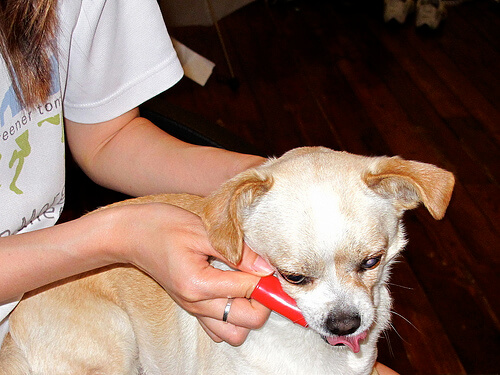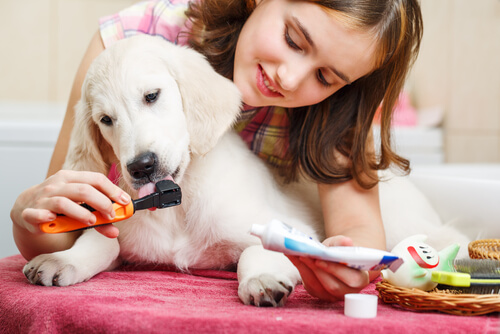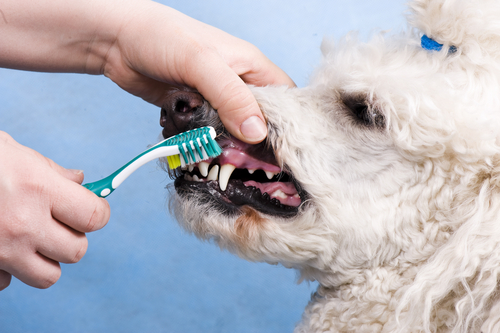How to Clean Tartar from Your Dog's Teeth

It turns out that this oral hygiene is key, since poor oral health can cause infections and eventually cause more problems. Would you like to know how to clean tartar from your dog’s teeth? We’ll tell you!
What is tartar?
Just as in people, dogs have bacteria that accumulates to form plaque from the remaining food left to decompose. All of this forms tartar, which accumulates between the tooth and the gum, and from there spreads to affect the oral structures, which can lead to infections and diseases.

When our dog has tartar it cannot be removed by brushing his teeth or with food, but rather needs the intervention of a veterinarian. Therefore, it’s better to avoid it altogether. Nevertheless, there are breeds that are more prone than others to develop it, such as the following:
- Smaller breeds like toy breeds. Their tooth enamel is weaker and lower quality than other breeds. They have smaller teeth that are closer together, which is a problem when it comes to general cleaning, so tartar develops easily.
- Brachycephalic dogs. The shape of their heads means their teeth are closer together, which prevents sufficient cleaning and consequently, tartar appears early.
- Dogs older than five years. If we haven’t taken measures to prevent tartar in dogs before age five, it will appear more easily after the dog turns five.
What are the consequences of tartar in dogs?
There are many infections and diseases caused by an accumulation of tartar, but the most common ones are:
- Halitosis and bad breath. Tartar is only the beginning when it comes to bad oral hygiene; bad breath is sure to follow and will be noticeable from a distance. This problem, while caused by tartar, could also trigger another oral disease that we is not visible at first glance. A visit to the vet is necessary in this case.
- Gingivitis. This is a disease of the gums noted by redness and inflammation. Little by little the gum will separate from the tooth and leave the tooth unattached to the point where it may fall out.
- Periodontitis. Periodontitis is often accompanies by halitosis and gingivitis and is a condition of dental rebirths due to tartar build up. The least serious consequent would be losing teeth, as the disease attacks and the mouth and creates access for the infection to reach the eyes and nose of the animal.
- Various infections. Not treating these said diseases could lead to major infections, which would affect vital organs like the heart, kidneys, intestine among others.
How to prevent tartar in dogs
Given the importance of tartar build-up in dogs, an important question comes to mind: how can we prevent it? Take a look at these tips and avoid problems later:

- Daily brushing. Just as we brush our teeth daily, this something that our pets needs, too. It will require effort on your part, but it will be worth it and you’ll save yourself trouble down the road; choose a tooth brush and tooth paste made for pets.
- Food and special toys. There are plenty of accessories at the pet store to help you prevent tartar, such as dog foods and treats. Talk to the vet and ask for her professional recommendation.
- Maintain his health. If the animal’s general health is good, his dental health will also be good. Feed him good quality food and give him daily exercise.
They say that the best defense is good offense. If you start attacking your dog’s tartar before it appears, you’ll have less to worry about later and your dog will enjoy a perfect mouth.